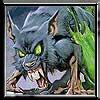im working on a tank project on unity that uses these kind of variaety as i said. but is that just playing with variables on program and script?
and how can i find they are compeletly balanced? i think varibles like speed and power are not rellated at all. i think i cant say
tank1: speed 20 power 80
tank2: speed 80 power 20
i think it doesnt work.
I'm doing this mostly from memory, so please feel free to chime in anyone if this information is not accurate.
As far as game balancing comes, I am a firm believer of playtesting, but I believe there's a way to make most of the legwork upfront by creating a model. This also insures that your playtests have specific aims and are much closer to realization (because playtesting has a price).
Earth 2140 is a bad example of balancing: One faction is stronger, the other faster. Developers insured that the strongest faction was less mobile, disregarding how important mobility can be in an RTS.
The result is that, in multiplayer, everyone played the 'weakest' faction because its mobility allowed it to have the best concentration of force at all times.
Playtesting would've revealed this flaw, but someone with a keen understanding of an RTS or warfare would've also realized it.
To make a better estimate of proper balancing, the developers should've started with a smaller shift, bearing in mind the effect on economy and tactical positioning. It is not unreasonable to believe that a force with 25% less firepower and 10% extra speed can actually gain the upper hand through clever use of terrain, manoeuvres (kiting), etc.
A better approach to balancing would be as follows:
- Define your 'stats' and how they impact gameplay
- Define which core stats differentiate your factions (if any, as per Earth 2140 series)
- Establish a ratio that is sustainable for each faction
- Bring each other stats as an 'answer' to bring the balance closer together.
For example, assuming we have a 'fast' faction, and a 'strong' faction.
"Strong Faction"
- ('norm' = 100% for each stat)
"Fast Faction"
- Average unit Life 75% from 'norm'
- Average unit Armor 75% from 'norm'
- Average unit Firepower 75% from 'norm'
- Average unit speed 110% from 'norm'
Making theoretical fighting scenarios we might end up realizing that the 'strong' faction would lose most encounters as the enemy kites and moves into positions of strength, forcing concentration of force encounters and cutting reinforcements.
If this is the case, we can implement a new 'stat'.
For example, we might choose to grant the 'Strong Faction' a bonus to Range (or the fast faction a range malus). This would effectively give them the first shot in most encounters, also reducing the enemy's will to force kiting encounters (during which they'd end up taking significantly more damage).
As a general rule of thumb, you never want the fastest unit in the game to also have the longest range as this makes it effectively a kiter with no possible weakness.
Medieval-themed games remedy this by adding cavalry units which are essentially faster, and close on the archers at a speed that makes their otherwise somewhat mundane stats much more relevant (they might take 1 or 2 hits before closing on the archers and defeat them). The cavalry is a perfect example of a 'specialist' unit, something creating with a rock-paper-scissor mindset that serves a purpose.
So to answer your original question, simply 'adding' speed and firepower together and making sure they both equal 100 is largely insufficient.
My example of RTS might be far-fetched, especially given your current scope, but this is what I have the most experience in and I wasn't too sure what your game really is about without more details.
The model exemplified above can still be used, you may just have much fewer units to consider.









